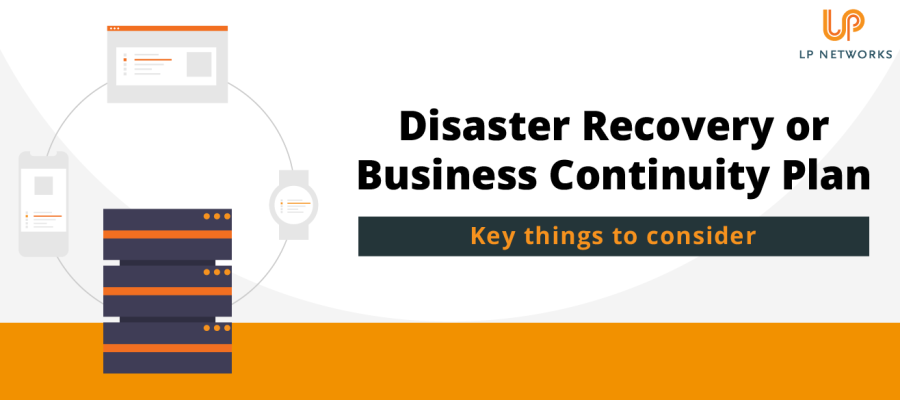- Solutions For
Specialist IT Support Services for:
- Popular Services
- Security
Security
- Our Expertise
Our Full Range of IT Services
- Learn
- About Us
- Contact
Posted 16th May 2023

We all love a good disaster movie, it’s one of those moments when you settle down on the sofa, watch as everything is sunny and wonderful and point at the TV and say, “we’ll they’re going to be stranded at sea/stuck on a volcano/lost in a wood.” We sit from the comfort of our lounges and feel smug that we wouldn’t run up the stairs in an emergency or know which direction moss grows on trees (thanks Google). But can we sit and feel so self-assured about our IT disaster recovery plan? If a flood or cyberattack happened to our businesses is there a Disaster Recovery Plan in place to ensure that everything goes back to normal with a minimum amount of drama?
In the simplest of terms, Disaster Recovery is the process that takes a potentially damaging IT outage and turns it into a moderate blip. An IT outage can come from anywhere. It could be a natural disaster such as a flood, or a cyberattack, or quite possibly something caused by human error, and can relate to anything connected to your IT. This can include IT systems, networks, infrastructure, communications, and of course your data.
A Disaster Recovery Plan is written in anticipation of potential problems and sets out the steps that your business should be undertaking, such as back-ups of your system and data. The DR plan (also known as a business continuity plan) is designed to get your IT system back up and running as soon as possible, meaning your business can get back to work without encountering financial losses or a damaged reputation.
A Disaster Recovery Plan should cover a lot more than your IT platforms, it should cover, at minimum, critical business processes as well as client and supplier communications.
Your plan needs to be business-specific and highlight the potential risks, critical systems and data to your business. Whilst a backup solution is an essential part of a DR solution, it is not a DR plan or solution.
An IT disaster doesn’t necessarily have to be a cyberattack, it can be as a result of anything that stops your IT systems from working properly. These can include:
One of the most important things that businesses could do is ensure that their cybersecurity policies are up-to-date and fit for purpose and that a robust Backup solution is in place, ideally with a DR element for fast recovery of business-critical applications.
Offsite Cloud Backups are the most effective and efficient way to backup data. Aside from being secure and fully encrypted, they are also unaffected by anything that happens to your physical premises. As a result, they could enable businesses to carry on as normal from an alternative location and device. Additionally, they are scalable, allowing companies to only pay for the data that they are using.
Every company is different and, as a result, the amount of downtime it can tolerate will be different. As an example, a business that is entirely reliant on the internet and using devices such as a web designer will have a far lower tolerance for downtime than a company that is less reliant on IT.
For any Disaster Recovery Plan, you have to consider two important objectives: the Recovery Time Objective (RTO) and the Recovery Point Objective (RPO). The RTO is the length of time it will take to recover your data and the RPO focuses on how far back it is acceptable to go to find a recovery point.
Within any Disaster Recovery Plan, it’s important to consider what these tolerance levels are. While none of us ever want our IT to stop functioning, it’s more realistic to consider how long certain sections of your IT could be reasonably unavailable for. So, for example, if your business has onsite servers, you will want them up and running as quickly as possible, while something that might not have a huge reputational impact on your business, for example, an internal communications system, could take a lower priority.
One of the best ways to do this is to take advice from experts in their field. As an experienced Managed Service Provider, LP Networks work with businesses of all sizes, providing impartial advice and recommendations on the best ways to ensure that their IT works for them. Our Business Continuity and Backup Service provides some of the highest levels of security possible and also works with your business to assess your current data and backup policy. With complete server disaster recovery solutions available as standard, as well as industry-leading daily backup solutions, our team work hard to make sure that your business is fully covered. Get in touch to find out how we can help you.

